The Concept

This article is the first of a four-part introduction. Permaculture design is a vast subject. There is no one repeatable design scheme. One size does not, cannot and should not fit all. From the desert to the arctic,
and everything in between, the design for every location, and every particular property is, of necessity, going to be quite different. There are multiple topics, techniques and practices, each with multiple layers
and multiple meanings, from the most mundane and obvious to the most metaphysical. This is just the start. In this first article, we will deal more with the conceptual, philosophical aspects of permaculture design. The second article will be more about the brass tacks.
First of all…
What Does “Permaculture” Mean?
The word is a contraction of “permanent culture” and “permanent agriculture.”
But what does that mean, exactly?
It’s quite distinct from both horticulture and agriculture. What sets it apart is the ecological set of ethics it is based upon. These are to care for the earth, the people, and to return one’s surplus. These principles, in turn, are expressed through design.
In permaculture design, every element, every plant, animal, building, what-have-you, performs multiple functions. Like cross pollination, or cross referencing, every element is connected to many other elements, in different ways. These ways change over time. It’s only natural. But in both horticulture and agriculture, these changes are never allowed. More often than not, they mean war. Toxic chemicals, back
breaking labor, and expensive solutions to situations that, really, never had to become problems in the first place.
The understanding and use of natural plant succession, for example, makes permaculture much easier than either horticulture or agriculture. Given enough time, and assuming nobody prevents it, a barren or
disturbed piece of land will eventually revert back to a forest. 
First, pioneer plants will move in, remediating the degraded soil, which, after a while, enables woody shrubs. This, in turn, starts enabling trees and their many under-story layers. This is called Forest Succession. By understanding this unfolding process, and doing things to support and enable it, we can dramatically accelerate this. Normally a 50 to150 year process, wise permaculturists can create Food Forests in about 10 years.
Unlike the domination mentality of mono-culture, it works in congruence with Nature rather than foolishly trying to conquer Her. There is no one right combination of plants to bring about a quick succession. Different elements work together in different ways, depending on the particular location. That is 100% ecologically sound. It mimics Nature. Like Nature, permaculture creates interdependent systems
that use various techniques, strategies and disciplines that result in regenerative and resilient human settlements.
Permaculture Science
As a basic definition, permaculture science can be described as a sustainable, creative design approach, based on the observation of natural patterns. It uses whole-systems thinking, employing integration not segregation, like horticulture and agriculture. It takes into account all the materials and energies in a given design idea. Designs are considered in terms of both short and long term effects, the successions they will follow.
For example–if we make a dam here, what will happen there? And would that be a good thing or end up creating a new problem? How will it affect the wildlife? What new growth will it encourage?
But this is barely scratching the surface.
Permaculture science has many branches–
- ecological design
- ecological engineering
- regenerative design
- environmental design and construction
- integrated water resources management
- sustainable architecture
- regenerative and self-maintained habitat
- agricultural systems modeled from natural ecosystems
As you can see, this is a very large and diverse body of understanding, well beyond the scope of this article to deal with comprehensively. But just reading the names of these different branches gives a sense
of the scope of it all. Don’t let that scare you off though. It is, for all it’s enormity, quite approachable.
Permaculture Design – 12 Principles
 As different and varied as permaculture designs are from one place to another, they all follow the same basic principles. When you understand these, you can grow fabulous food forests anywhere. Not surprisingly, the basic principles of permaculture design are also the basis for a happy healthy life. Because it really is, all connected.
As different and varied as permaculture designs are from one place to another, they all follow the same basic principles. When you understand these, you can grow fabulous food forests anywhere. Not surprisingly, the basic principles of permaculture design are also the basis for a happy healthy life. Because it really is, all connected.
1. Observe and Interact
Empiricism is where it’s at! Paying attention to the behaviors of plants…where they do well, where they don’t… is an important part of an ethical, sustainable way of life. Our planet is 4.6 billion years old (as best we can figure). That’s a long time to get it right. What better teacher could we ever hope to find? When you learn how to listen, Nature has all the answers.
2. Catch and Store Energy
Our planet is full of energy we can capture and store in various ways, without causing damage. Swales store water. Plants and passive solar infrastructures store energy from the sun. Southern exposed walls
absorb and hold heat…and the trellises built on them produce food. Always look for the myriad ways to catch and store energy.
3. Obtain a Yield
When we work with nature, we get everything we need. Obtaining a tangible yield of organic produce to feed our families is simple enough. But the bigger picture is in the intangible yield. The health, happiness,
mental and spiritual well-being that comes from living in congruence with Nature surpasses everything. It’s priceless.
4. Apply Self-Regulation and Feedback
Book learning is great. It’s a great place to start. But the real learning comes from actually doing and living it. Getting our hands dirty. Paying attention to results. Knowing what we got right helps us figure out what we got wrong and humility allows us to keep moving forward in a positive direction.
5. Use and Value Renewables
The sun, wind and water grows our food, and regenerates our environments. It can and should power our homes. The more we’re able to replace fossil fuels with renewable energy sources, the better. We can switch to a green energy supplier. Or, better yet, generate our own power with solar panels and/or wind turbines. And it doesn’t have to be all at once. That’s probably not realistic for most. But every single
improvement we can make on this front is a step in the right direction.
6. Produce No Waste
Buy from thrift stores. Compost kitchen scraps. Fix things that are broken. Know that there is no such thing as throwing stuff away—there IS no away. Buy less, live more. And when you really have to buy something, only patronize ethical companies
7. Design from Patterns to Details
First, look at the Big Picture, in holistic terms. Then, the right details will be able to fill in quite naturally. This is not only true for our gardening endeavors, but for every aspect of our lives. This is how to create positive change.
8. Integrate Don’t Segregate
There is incredible strength, balance, harmony and sustainability in diversity. Which is why Nature is so unbelievably diverse. Constant expansion, experimentation and expression. It has no end. Nature
plants in polycultures. We should too. The polyculture guilds of permaculture are the perfect reflection of the brilliance of Nature. When we apply this excellent gardening advice to our human communities, we can, literally, save the world.
9. Use Small, Slow Solutions
Like compounded interest, little things have the power to grow into something that’s potentially enormous. By constantly making seemingly small, incremental changes, we can, fairly effortlessly
move into a whole new life. One thing at a time. You don’t have to go out and buy an organic farm. Odds are you’re not in a position to and can’t right now. But you can do a little container garden in front of a sunny window. Likewise, you can’t change your shopping and buying habits in one day. But you can start implementing changes. Do it! It adds up.
10. Use and Value Diversity
Our gardens are reflections of our lives and belief systems. Do we tear up the ground and plant a whole acre with nothing but carrots? Then spray gallons of poison to keep away the inevitable swarms that would attract? No! A large swathe of just one plant is like a beacon to the insects that love it the most. We plant all sorts of things together, like Nature does, and no pesticides are required. Predatory insects, attracted to the flowers we provide them, will eat all those pests. The permaculture belief system applies to our lives, too. It’s like diversifying your portfolio. Stability and strength are ours when we diversify our gardens and our lives.
11. Use Edges and Value the Marginal
The borders in a permaculture garden can be worlds unto themselves. With the thoughtful placement of rocks and logs, multiple tiny micro-climates are created, which ups the overall fertility. Don’t ignore the small or weirdly shaped spaces. Sustainability makes use of every nook and cranny. In land use, home and work life, or civilization in general, we need the fringe elements. Heretics and thinking outside the box are important. It’s fascism prevention.
12. Creatively Use and Respond to Change
Don’t be afraid of change…it’s life’s only constant! Permaculture is about the future. Permanent Culture. The triad of death, decay and regeneration is the core of everything. Everything dies, and in its death creates the possibility for new fecundity and life. When we design our gardens around this core understanding, we can produce a beautifully extravagant, delicious abundance of food. And the
intangible benefit is that it changes us for the better.
In Conclusion
Not really. It’s just the Beginning!
Permaculture is a whole new start for humanity. The chance to do it right, this time. But, like “New Age Spirituality,” permaculture only seems new. Compared to the long tradition of getting it all completely wrong, it does seem new, super creative and highly innovative. In reality, it is a newly dawning
understanding of something so much more ancient than even humanity, itself.
Permaculture is both broad and deep, with endless possible permutations. It provides scope for the imagination, health, wealth and an endless source of beauty and learning. It doesn’t ever end.
Educate Yourself!

Affiliate Disclosure
I am pleased to partner with Chelsea Green Publishing. It’s a magnificent company dedicated to spreading the word about permaculture, organic farming, sustainable living and social responsibility. Following, are just a few of their excellent books. If you buy any of them by following the links, I might earn a small commission. It supports this work.
- The Forest Garden Greenhouse
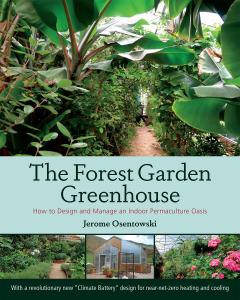
- Description:With a revolutionary new"Climate Battery" design for near-net-zero heating and cooling
- Price: $34.95
- The Independent Farmstead
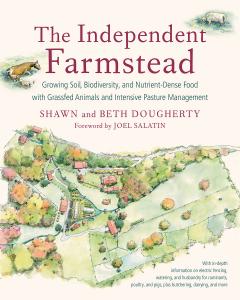
- Description:With in-depth information on electric fencing, watering, and husbandry for ruminants, poultry, and pigs, plus butchering, dairying, and more
- Price: $34.95
- Edible Forest Gardens: 2 Volume Set
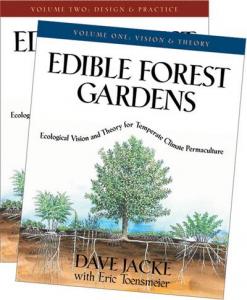
- Description:Edible Forest Gardens is a groundbreaking two-volume work that spells out and explores the key concepts of forest ecology and applies them to the needs of natural gardeners in temperate climates. Volume I lays out the vision of the forest garden and expla
- Price: $150.00
- The Suburban Micro-Farm
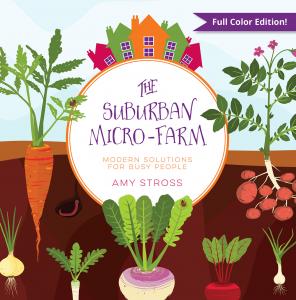
- Description:Reduce your lawn and your grocery budget. Take gardening to the next level!
- Price: $34.95
- Whole-Farm Planning
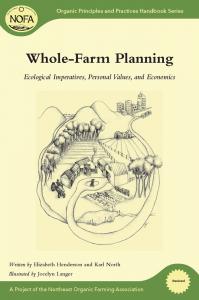
- Description:Part of the NOFA Guides. Includes information on: Lessons from systems science (including tools), Assessing the whole farm (what are we managing? the people, physical and mental assets, money), Understanding the farm ecosystems (the water and mineral cycl
- Price: $15.95
- Sepp Holzer's Permaculture
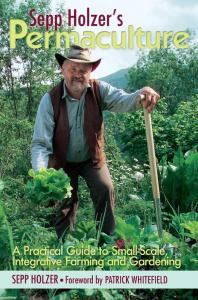
- Description:Sepp Holzer farms steep mountainsides in Austria 1,500 meters above sea level. His farm is an intricate network of terraces, raised beds, ponds, waterways and tracks, well covered with productive fruit trees and other vegetation, with the farmhouse neatly
- Price: $29.95





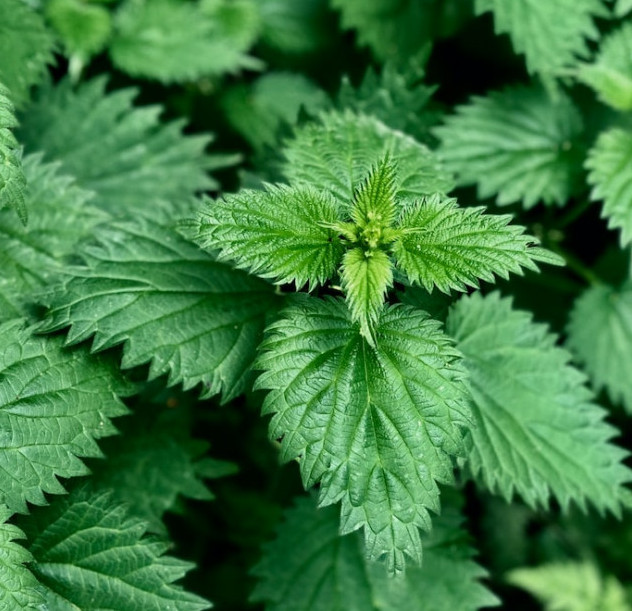

Thank you Anna-Vita for this detailed overview and working definition of exactly what permaculture is and how it should be layed out in terms of designing one’s space.
Looking at the consequences say, of changing one’s property such as the dam that you mentioned, the permaculture philosophy seems to be all-inclusive and have elements that are unforgiving or unbending depending on the care that is taken to adhere to the principles you espouse.
Just one question, if it just me or does the discipline required to pull off this meaningful, life-changing design philosophy seem intimidating to the point of running people off or once you settle in does it all start to seem a little more doable?
Hi Joseph
Yes. I think it certainly can be intimidating. At least if one is more cerebral than necessary. But, in reality, it’s nowhere near as painfully complex as it may seem. I mean, like anything, it’s what you make it. It can also be a totally laid back, trial and error, easy come, easy go kind of a thing.
It’s just, writing about it…when trying to be thorough, it’s hard to keep it from sounding hard. You know?
Thanks for your great comment. 😀
Anna-Vita
I found your article exciting yet sad for me. About 20 years ago, I left my homestead because of a marriage breakup. I lived by many of the principles that you have termed Premaculture. I just called it common sense. I cut poplars for firewood, but stumped them so that should would grow and I would have new trees. I am gone but the trees are there. My house was dug into the side of hill. From the front it looked like one story with a steep roof. From the back it was 3 stories with almost all glass walls. I had a thin field stone floor that absorbed heat from the sun and radiated that heat for several hours as the sun went down. Anyway, your article is right on. It has just made me miss my place.
Jim
Oh Jim! It sounds beautiful! I feel your pain of missing it too! What a loss.
Actually, common sense is what I call it too. “Permaculture” is a new word that describes…common sense! Humans used to know all this stuff. We learned it directly from Nature, who is a very willing and good teacher. It was only after getting away from it, because we got too big for our britches, believing ourselves to be better than Nature, that the trouble began. It was a couple of guys in Australia, wanting to figure out the right ways of doing things, that came up with the word “permaculture.” And, at this point, we probably NEED a fancy word for common sense. Because how else will people realize there is a different way? Annoying, that. Because it’s not new. It’s incredibly ancient.
Take care,
Anna
Interesting!
I really liked it and I really agree that we need to make a change in this world. I am from Romania, and the wood from our forests is overexploited. Which leads to higher temperatures, bear invasions in cities that are near forests and many other unpleasant incidents.
Now I’m not very old, but I think that everyone should help at least a little. I started to see people installing solar panels more often. This increases my hope that we will make this planet a cleaner place.
I myself am planning to install some solar panels because they will reduce my expenses, but I will also do a favor to nature.
Related to the problem I mentioned above. I want to know your opinion on this and how we can stop this. I am sure that this problem does not exist only in Romania.
Hi Antonio
No, it’s not just Romania. It’s everywhere. Major deforestation has been going on since the Bronze Age. It’s part and parcel of the dominator mentality. In order to make weapons with a metal that is hard enough to kill people, you have to have extremely high heat. That means cutting down a LOT of trees. By the time the Iron Age rolled around, people were like, OMG! There’s hardly any trees left! And they started figuring out other ways to do metallurgy. From what I understand, iron can be made more easily…with lower heat? Not totally clear on the details, but it was a time of trying to be more sustainable. Too bad it didn’t last.
Along with deforestation, human agriculture has been causing desertification since it started. In particular, the monocultures that have been devised. On the surface they seem more efficient. Like assembly lines. Because sure. You DO get more done by doing only one thing, repeatedly. But 1. We weren’t meant to live like that. Like slaves. And 2. Monocultures cause incredible harm. Even with crop rotation, it really depletes the soil. Having enormous areas planted in only one thing prevents the soil from growing because there isn’t enough variety of nutrient in the dead leaves that remain. Plus, an enormous area planted in only one thing is like a beacon to the insects who love that one thing the most. So pest control becomes a major problem, pesticides a necessity. It’s a deadly domino effect that gets worse the longer it goes on. And the bigger the Ag gets, the more it is accelerated. Add GMOs and all the toxic horrors that go with that, and it’s just mind boggling.
The Arabian Desert used to actually be a verdant cedar forest. Seems unbelievable, doesn’t it?
Thank you for your great comment.
Anna
This article opened my eyes to the fascinating world of permaculture design! I love how it goes beyond traditional horticulture and agriculture, focusing on ecological ethics and interconnectedness. The concept of every element in a design performing multiple functions and being connected to others in different ways is truly inspiring. It’s amazing how permaculture embraces natural patterns and creates regenerative and resilient systems.
The 12 principles, like observing and interacting with nature, catching and storing energy, and valuing diversity, provide a solid foundation for a sustainable and fulfilling life. Permaculture is definitely a game-changer for humanity’s relationship with the environment. Can’t wait to dive into Part 2!
Yes, it is truly amazing.
And you’re right, it is a solid foundation for a fulfilling life, too, not just a garden. (As if there’s really a difference!) By following the principles of permaculture in everything we do, we make our lives consistently better all the time.